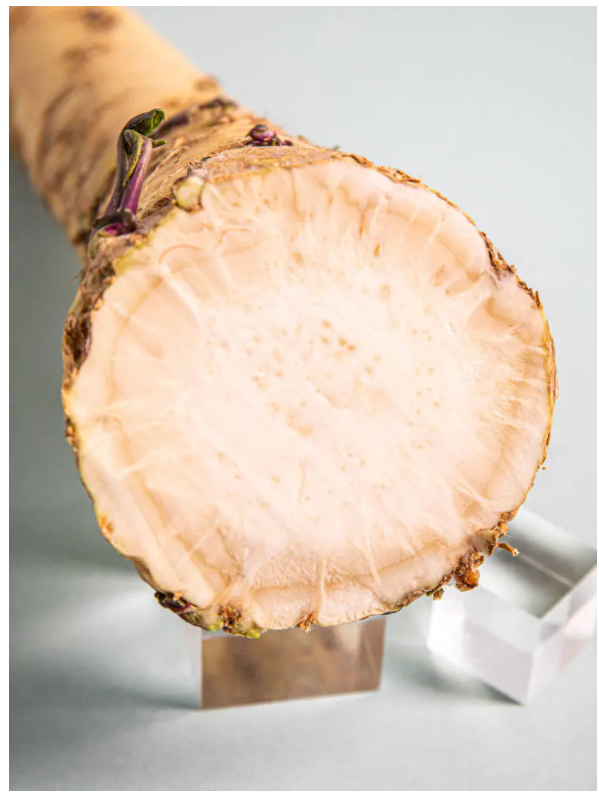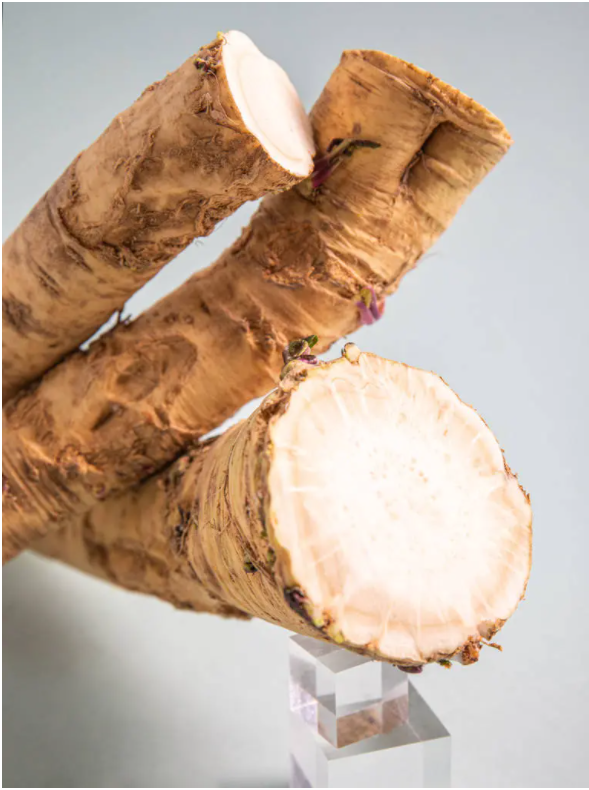As for horseradish, it is most appropriate to start this article with my first “baptism of pain” as a child. When I was five or six years old, I sat in my grandmother’s kitchen and watched her busy preparing lunch for the day: potato finger noodles with horseradish sauce and beef stew (my favorite childhood).
Grandma put the seemingly harmless root into her old cooking machine. When she finished grinding, she suddenly remembered that she needed to get something else from the food store, so she left in a hurry, leaving a warning in the air: “Don’t touch or smell the horseradish here.” The combination of this kind and constructive opinion with my child’s curiosity will obviously have the opposite effect. When Grandma came back, she found me sitting on the kitchen floor sobbing loudly — I not only took off the lid of the cooking machine, but also pointed my face squarely at a pile of freshly ground horseradish. The results can be imagined.
Although it is as strong and sharp as horseradish, if you cook it in a proper way, you still need not be afraid, and you can easily control its eating method. Now let’s get to know it.

1. Hello, my name is horseradish
Since the Middle Ages, horseradish has been widely used in the field of herbal medicine. This spicy root block tastes similar to mustard, which belongs to the same cruciferous family. It is rich in vitamin C, B vitamins, potassium, calcium, iron and essential oil.
With such rich core nutrients, horseradish is certainly very beneficial to our health. The most significant is the glucosinolates it contains. Its antiviral and anti microbial efficacy is certified by scientific research.
The strong pungent smell of horseradish comes from allyl mustard oil, which is produced by the enzymatic development of black mustard potassium glucosinolate contained in it. The result is the obvious strong smell of horseradish.
2. How to purchase the perfect horseradish
If you want to harvest horseradish by yourself, you should start planting it in spring. When its ground stems and leaves begin to wither, it indicates that the roots have matured, and then horseradish can be harvested. The harvest season usually starts in October and ends in early February.
You can also buy horseradish in many farmers’ markets and supermarkets. However, you should pay attention to making sure that you buy it. Because it’s easy to mix horseradish with celery root.
3. How to store horseradish correctly
Horseradish can be stored in the refrigerator for about 4 weeks. If the stems and leaves have been cut off and only the roots are left, the storage period should be only about 2 weeks. You can also grind horseradish as a whole, or put it into the freezer after fine grinding, so that it can keep for half a year.
It is a good way to put the ground horseradish into ice cubes to freeze them. In this way, each time you need to use it to flavor soup, sauce or salad, you can easily use the just right amount. The disadvantage is that the taste of horseradish will be lost after freezing. So if you want to enjoy its unique taste without any discount, you’d better use fresh or purchased horseradish directly.
4. How to enjoy horseradish
After cleaning and peeling, horseradish can be grated with a wire planer or directly ground with a blender. However, be careful of the strong and eye stimulating gas when opening the lid (learn from my experience)! Grinded fresh horseradish can add flavor to seasoning or sauce, and can also be used in soup and salty milk.
Horseradish is generally suitable for fish and seafood dishes. It can also be used with vegetables such as beets, potatoes, celery and sesame, as well as fresh herbs such as shallots, dill and parsley. If you don’t like too spicy, you can boil the horseradish or dehydrate it, which will weaken its strength.

Post time: Dec-02-2022





